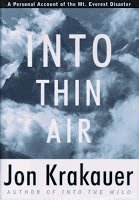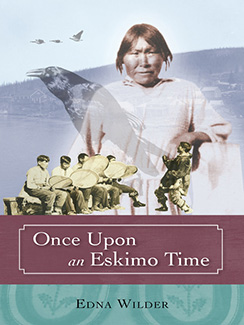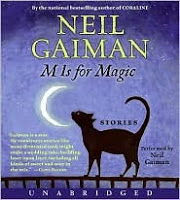I have affiliate relationships with Bookshop.org and Malaprop's Bookstore in beautiful Asheville, NC. I will earn a small commission at no additional cost to you if you purchase merchandise through links on my site. Read more on my affiliate page.
In 1996, Jon Krakauer attempted to climb Mt. Everest as part of a guided group for a writing assignment for Outside magazine. An experienced climber in the hands of a reputable group of guides, he didn’t really foresee any problems. Go, climb the mountain, hope conditions allowed them to reach the summit, go home, write the article. But things are rarely that easy. A storm blows up, reminding everyone that nature laughs at our best-laid plans; some questionable decisions are made; and suddenly the entire group is fighting for their lives.
I’ve decided to try reading a non-fiction book in bed at night, thinking that I won’t be quite as interested in non-fiction, and so will find it easy to put those books down and get to bed at a decent hour. This is the first book I grabbed from the library with that in mind. Ha! I don’t know if I could have picked a worse book for tame, before-bed reading!
My poor husband has had to listen to me babble on and on about people he knows nothing about as I’ve made my way through this page-turner. Even if the climb had been fairly straight-forward, I found it interesting to read about what drove these people, how they acclimated to the altitude, and how exactly one manages to climb the highest peak on Earth. I know nothing about mountain-climbing, and, while I did find all this fascinating, I have to say that I’ll be staying in my tame little Appalachians doing easy to moderate hikes. I’m not someone who likes to push myself beyond my limits, but it’s always nice to step outside your comfort zone, even if it is through the pages of a book, and see what’s going on with others who live differently than you.
There were so very many people climbing the mountain that I completely lost track of who was who. I had the head guides down, and one or two people who really stood out, but they really did start to run together. There is a list of who’s who at the beginning of the book, but, in this edition at least, it only lists names, nationalities, and which group they were on. Not much to go on there.
It amazed me how many people climb Everest at one time. My edition only had a handful of pictures, but there were literal lines to get up certain sections of the mountain. I imagined that it would be your very small group and that would be it as far as you could see. But there are the bottlenecks, and even as they’re blundering about in the storm, random people would suddenly pop up out of nowhere to ask for directions back to camp. It sounds comparatively crowded up there!
I don’t know how it is now, but Krakauer even mentions the literal tons of trash littering the slopes of Everest and some of the cleanups that were underway around that time. I understand that you don’t want extra weight on a climb like that, but, come on. Pack it out. I hope it’s been cleaned up more in the 15 years since this book was published.
I at first thought this was a book my husband would enjoy. Then I realized that there were a few too many mistakes being made. As I told my husband about the book, he just said, “I can’t read that. I don’t have patience for that kind of thing.” And he doesn’t. Being a perfectionist, he does have a hard time reading about what might appear to be stupid mistakes.
Which brings me to my last point. It’s very easy to sit in my snug little house under my comfy blanket and with a mug of tea by my side and believe that these people made some stupid mistakes. But, for me at least, Krakauer did a good job of explaining that you just can’t think straight at that altitude. I was able to keep that in mind, read it as an adventure story with tragedy at its heart, and withhold judgment. Others, like my husband, may not be able to step back and do that. So, I say, withhold judgment yourself until you’ve been in their position. People paid for mistakes with their lives, some of the survivors feel guilty, and that’s the end of that. No one else needs to throw stones.
I highly recommend this if you don’t think you’re too much of a perfectionist to be put off by it. Just don’t try to read it before bed unless you do want to be awake all night, turning pages!
Read an excerpt.
I read this for my own Dewey Decimal Challenge.
Buy Into Thin Air: A Personal Account of the Mt. Everest Disaster on
I have an affiliate relationship with IndieBound, Book Depository, and Better World Books and will receive a small commission at no cost to you if you purchase books through links on my site.






3 Comments
I recently read Aron Ralston's memoir, Between a Rock and a Hard Place. While parts of the book seemed too technical for my liking (parts where he talks about the whole adventures that he had done) but the way he explained it and that the things that driven him to do what he did truly is fascinating. Loads of things that he did are unthinkable and I thought how could something so dangerous make a person feels so alive? I don't think that normal people in his circumstances will survive what he had went through, seriously!
I've been wanting to read this one for a LONG time. It sounds so fascinating!
I often step out of my comfort zone–vicariously through books, that is! One of the best parts of reading, for me, is that ability to step into someone else's shoes and live that life for awhile, especially when they are shoes you might not wear otherwise.
Have you read "Into the Wild"? That is also great!